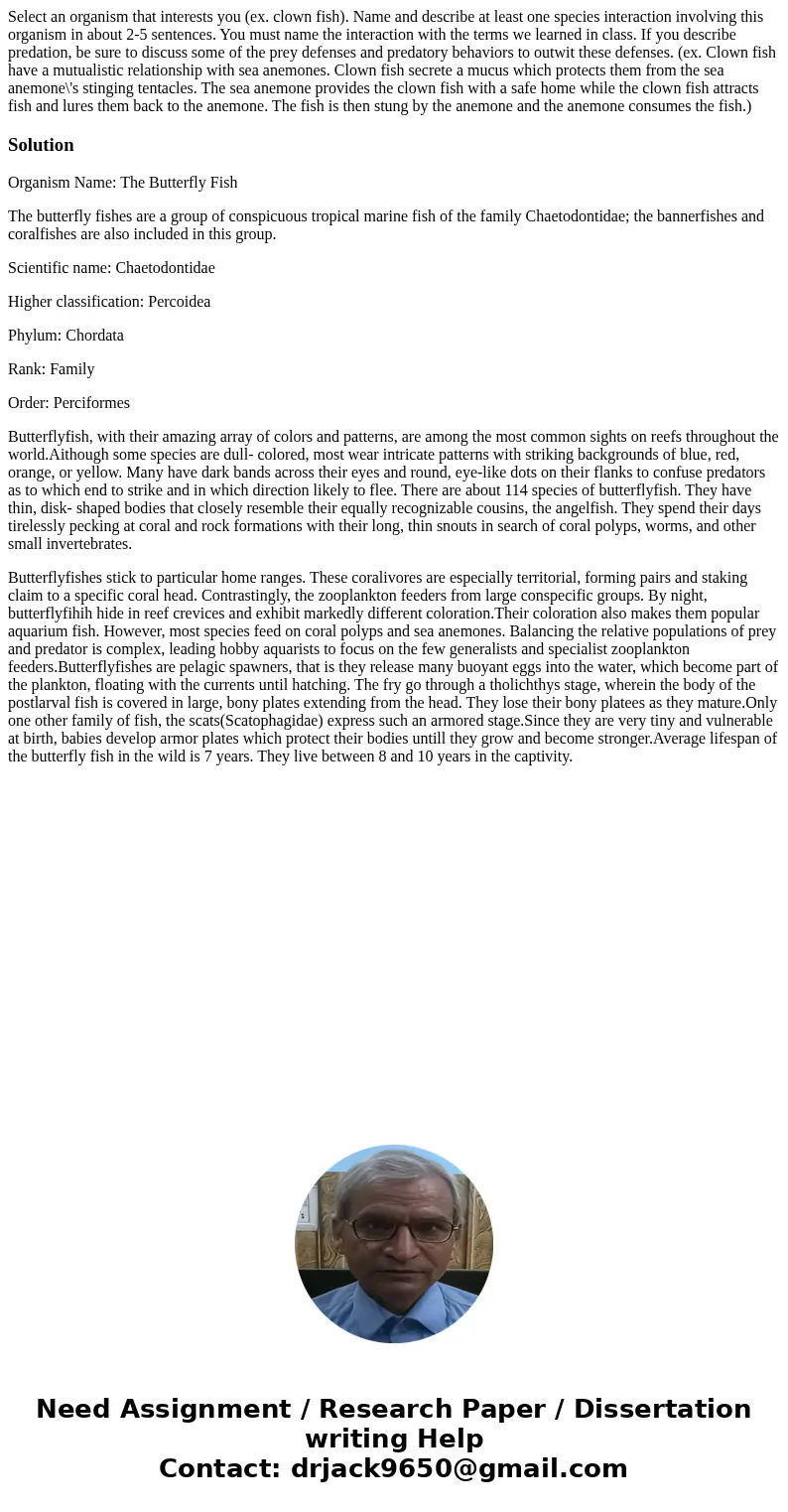Select an organism that interests you ex clown fish Name and
Solution
Organism Name: The Butterfly Fish
The butterfly fishes are a group of conspicuous tropical marine fish of the family Chaetodontidae; the bannerfishes and coralfishes are also included in this group.
Scientific name: Chaetodontidae
Higher classification: Percoidea
Phylum: Chordata
Rank: Family
Order: Perciformes
Butterflyfish, with their amazing array of colors and patterns, are among the most common sights on reefs throughout the world.Aithough some species are dull- colored, most wear intricate patterns with striking backgrounds of blue, red, orange, or yellow. Many have dark bands across their eyes and round, eye-like dots on their flanks to confuse predators as to which end to strike and in which direction likely to flee. There are about 114 species of butterflyfish. They have thin, disk- shaped bodies that closely resemble their equally recognizable cousins, the angelfish. They spend their days tirelessly pecking at coral and rock formations with their long, thin snouts in search of coral polyps, worms, and other small invertebrates.
Butterflyfishes stick to particular home ranges. These coralivores are especially territorial, forming pairs and staking claim to a specific coral head. Contrastingly, the zooplankton feeders from large conspecific groups. By night, butterflyfihih hide in reef crevices and exhibit markedly different coloration.Their coloration also makes them popular aquarium fish. However, most species feed on coral polyps and sea anemones. Balancing the relative populations of prey and predator is complex, leading hobby aquarists to focus on the few generalists and specialist zooplankton feeders.Butterflyfishes are pelagic spawners, that is they release many buoyant eggs into the water, which become part of the plankton, floating with the currents until hatching. The fry go through a tholichthys stage, wherein the body of the postlarval fish is covered in large, bony plates extending from the head. They lose their bony platees as they mature.Only one other family of fish, the scats(Scatophagidae) express such an armored stage.Since they are very tiny and vulnerable at birth, babies develop armor plates which protect their bodies untill they grow and become stronger.Average lifespan of the butterfly fish in the wild is 7 years. They live between 8 and 10 years in the captivity.

 Homework Sourse
Homework Sourse